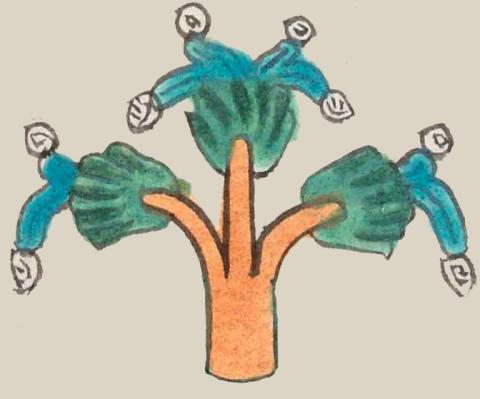ahuatl (Mdz21v)
This element has been carved from the compound glyph for the place name, Ahuatepec. It shows an oak tree with three branches, each with green foliage at the ends. Emerging from the green foliage we see turquoise-colored water (atl). So, this is an element from a compound glyph, but it still has two elements, with a downward reading order. This recurs across other examples of the sign for ahuatl, oak tree.
Stephanie Wood
This visual of water (atl) coming out of the branches of the tree is a phonetic clue that we are not seeing just any tree (cuahuitl), but a tree beginning with the sound "a." Wiktionary has an entry for ahuatl. Some Nahuas today also have the last name Ahuatl.
Stephanie Wood
c. 1541, but by 1553 at the latest
Stephanie Wood
oak trees, robles, encinos, water, shells

ahua(tl), oak tree, https://nahuatl.wired-humanities.org/content/ahuatl
a(tl), water, https://nahuatl.wired-humanities.org/content/atl
oak tree
Mexico City
el roble
Stephanie Wood
Codex Mendoza, folio 21 verso, https://digital.bodleian.ox.ac.uk/objects/2fea788e-2aa2-4f08-b6d9-648c00..., image 53 of 188.
The Bodleian Libraries, University of Oxford, hold the original manuscript, the MS. Arch. Selden. A. 1. This image is published here under the UK Creative Commons, “Attribution-NonCommercial-ShareAlike 3.0 License” (CC-BY-NC-SA 3.0).


